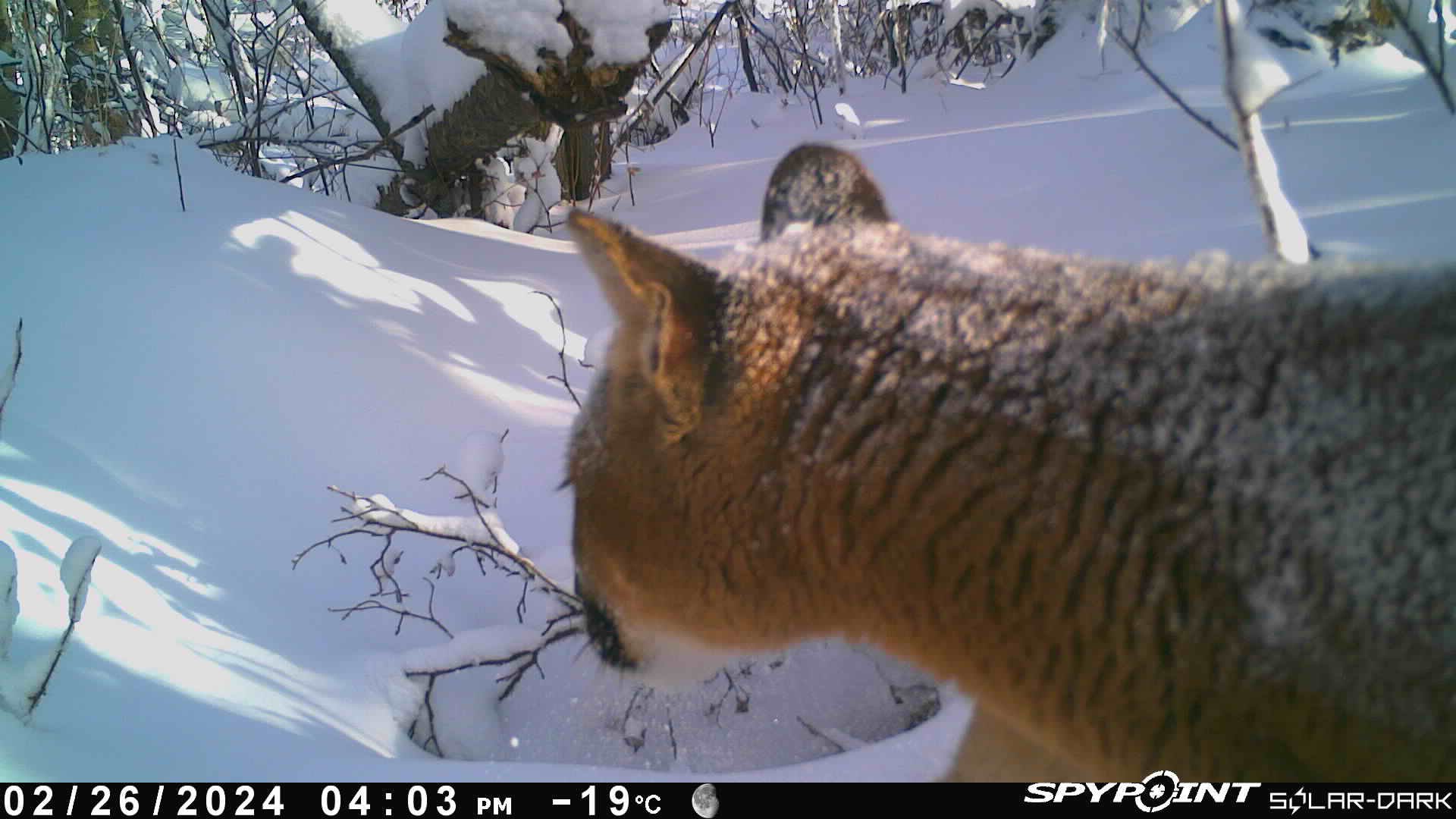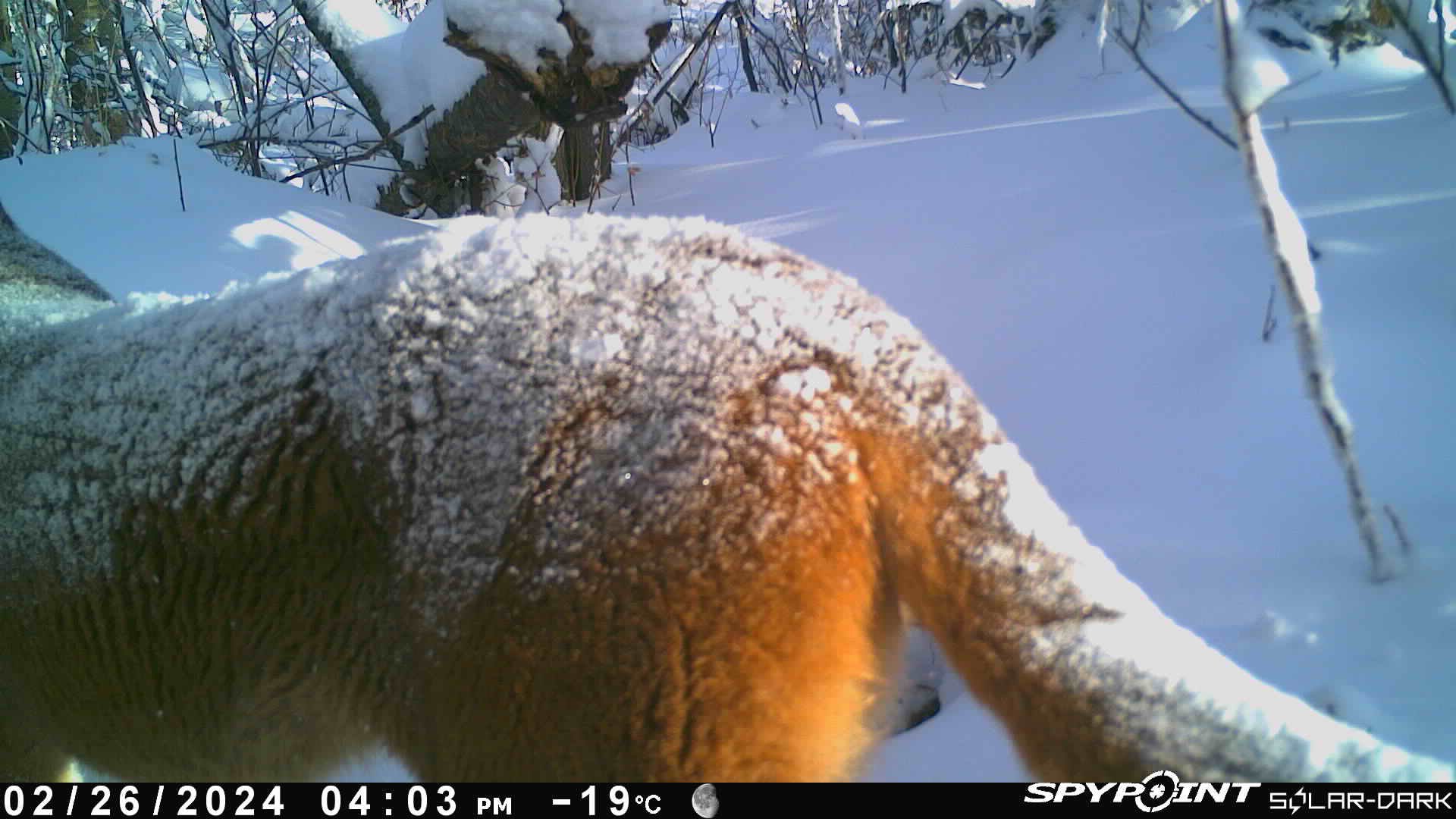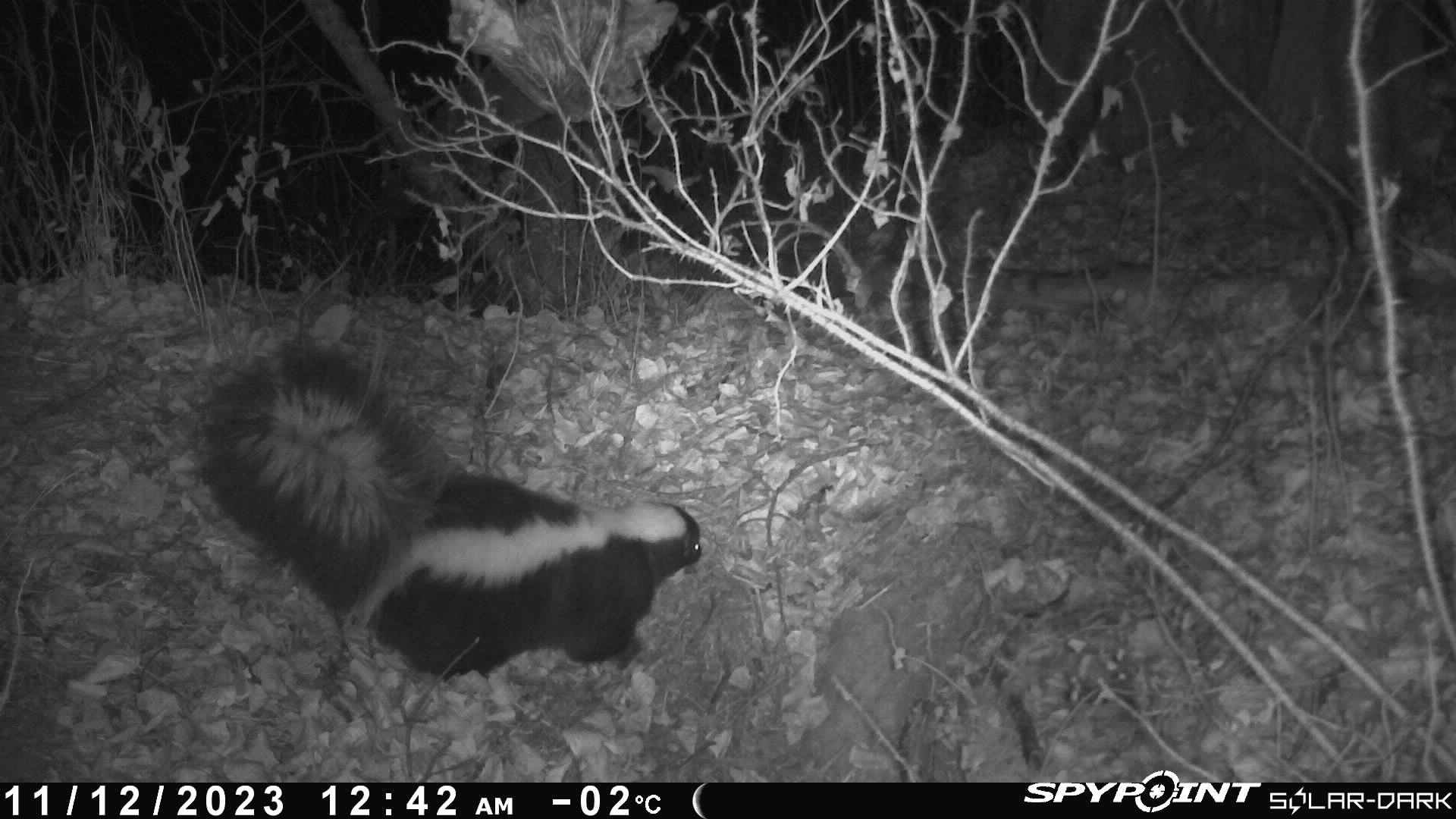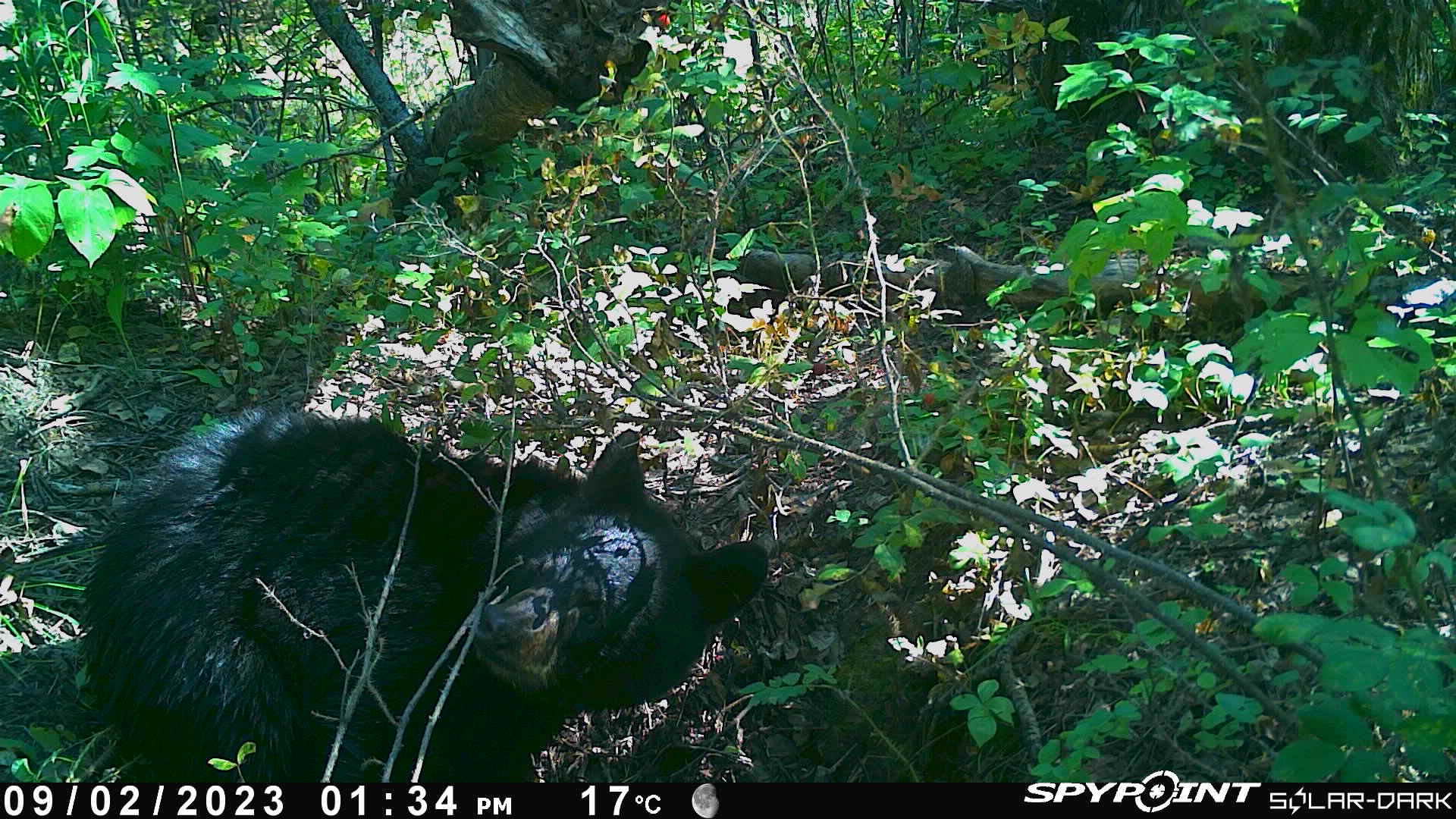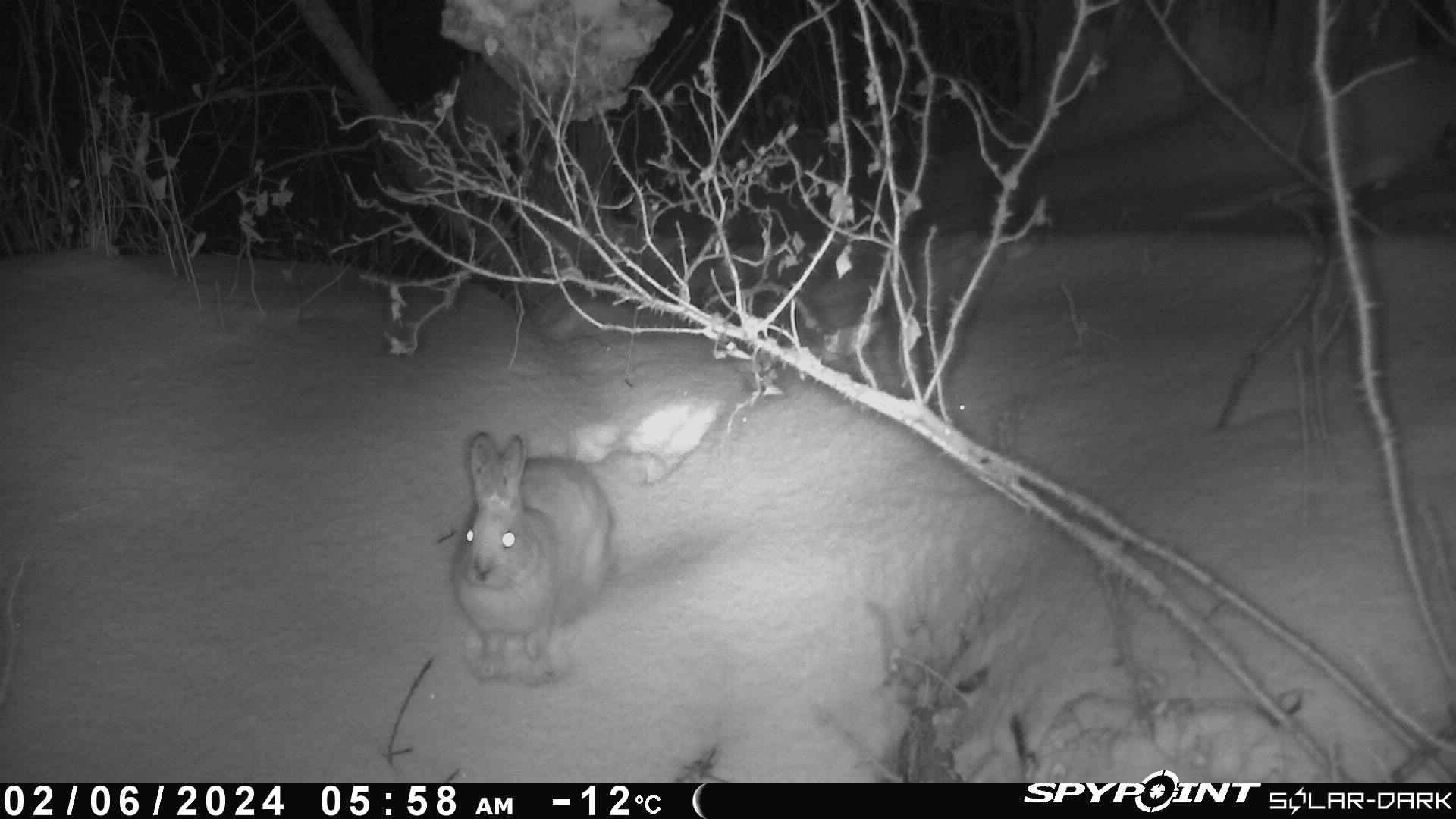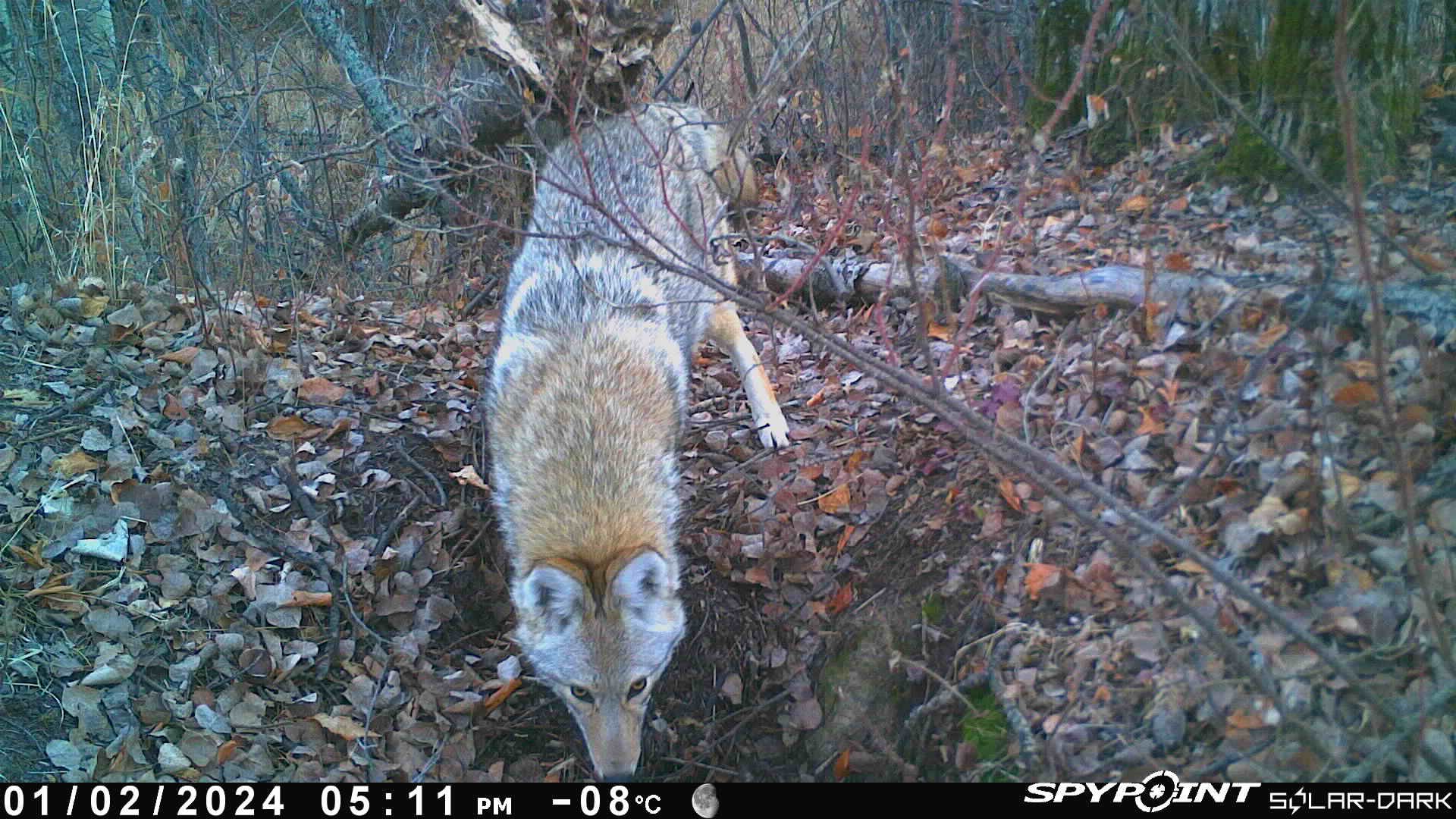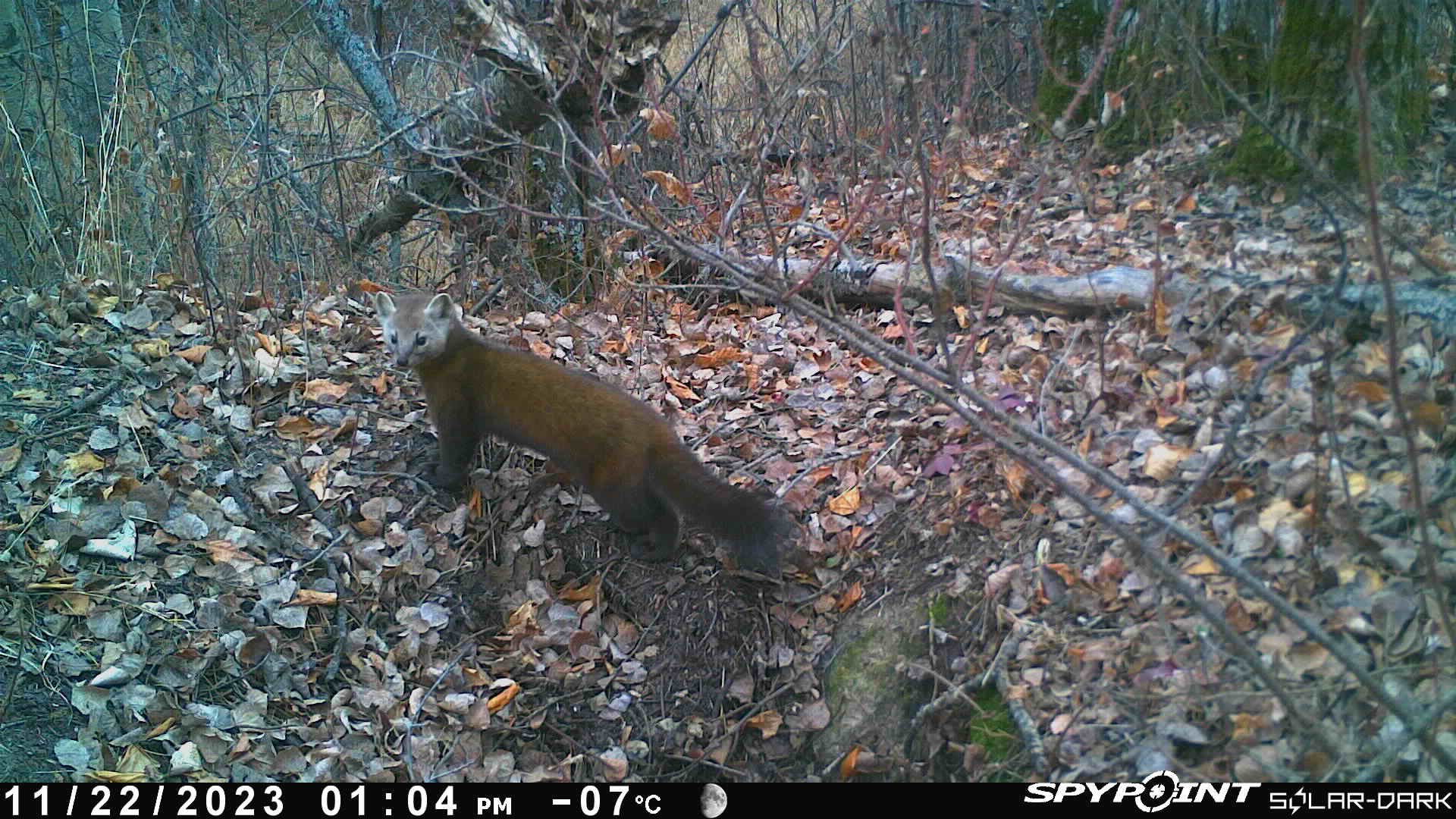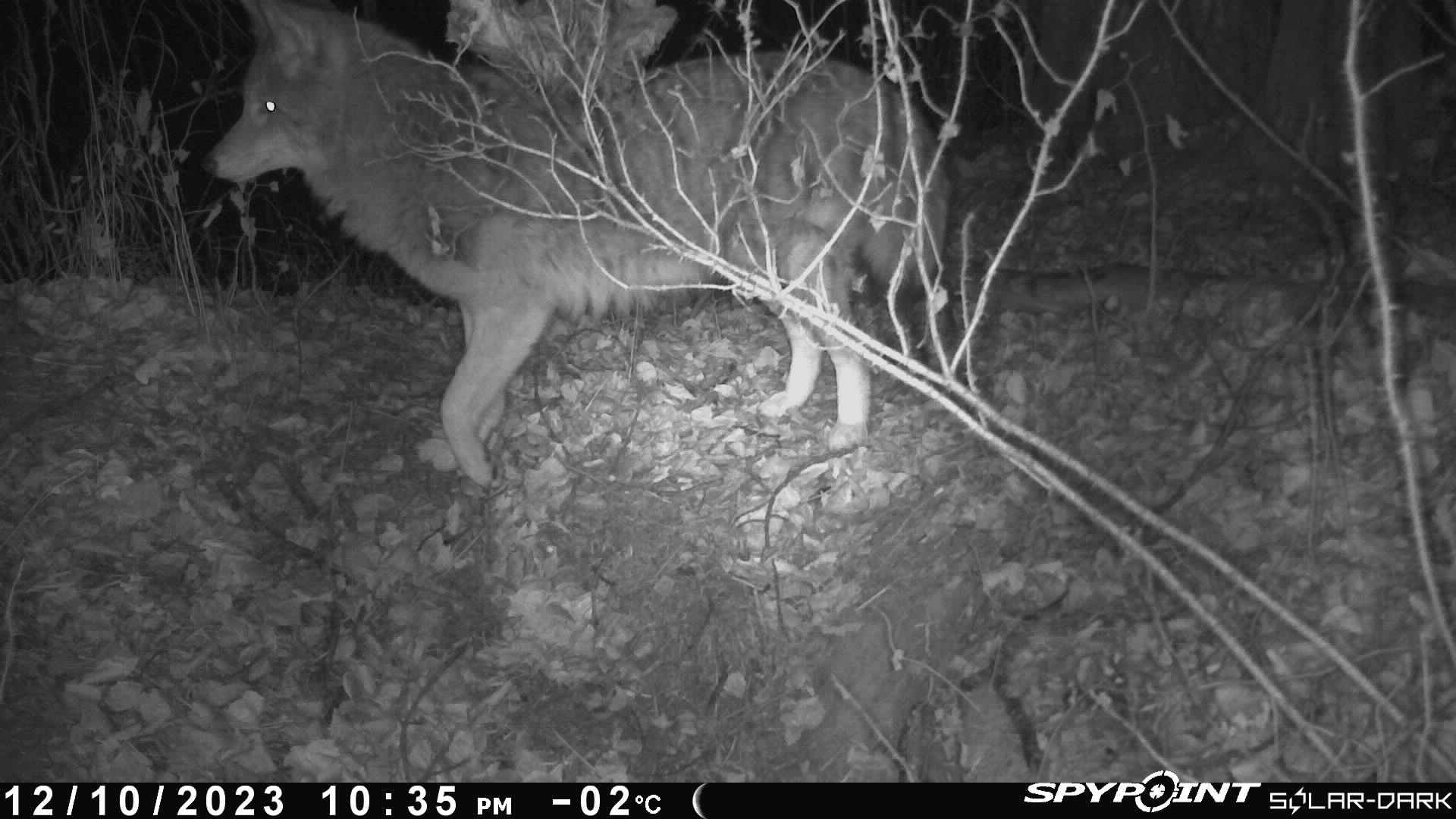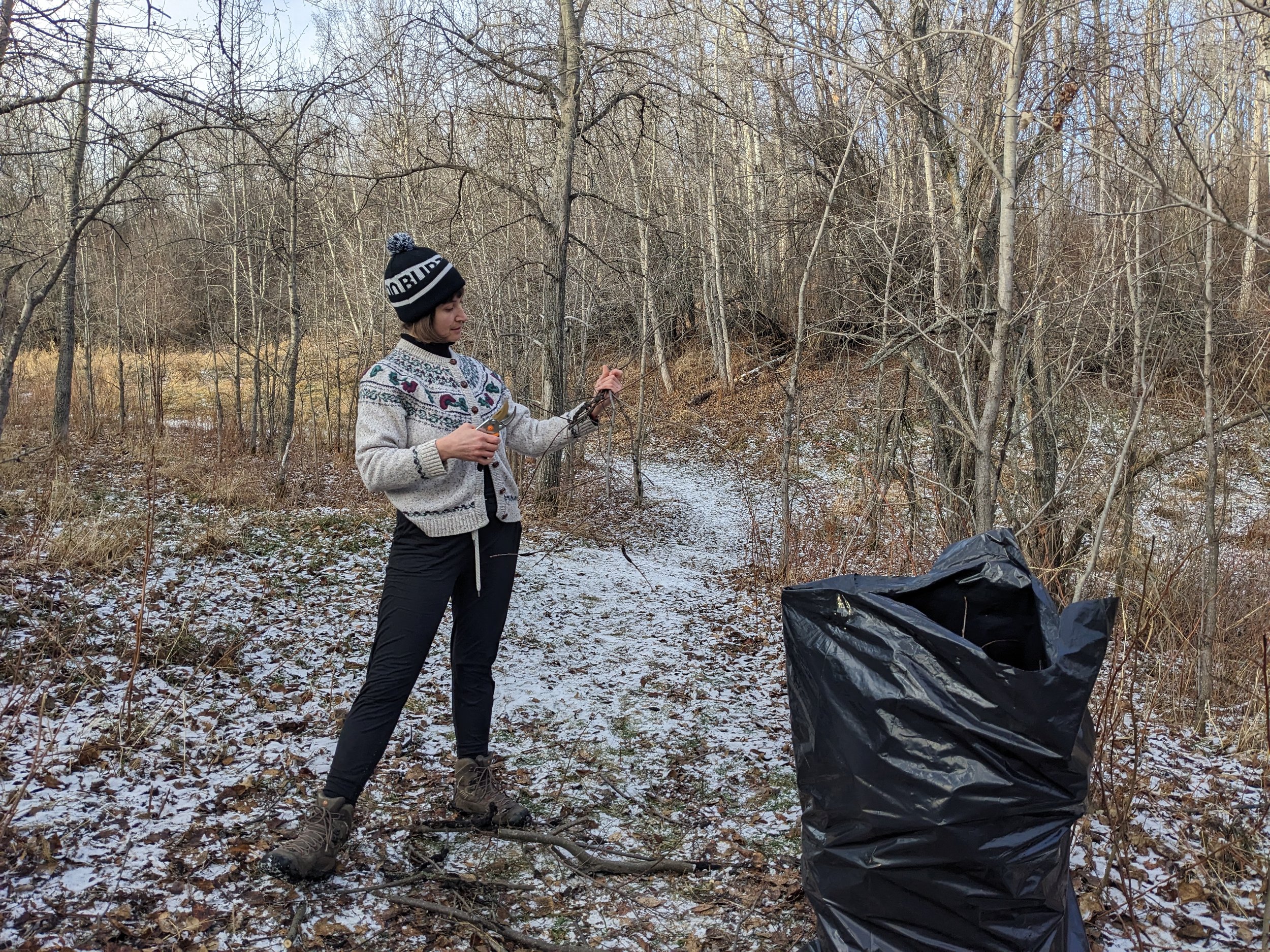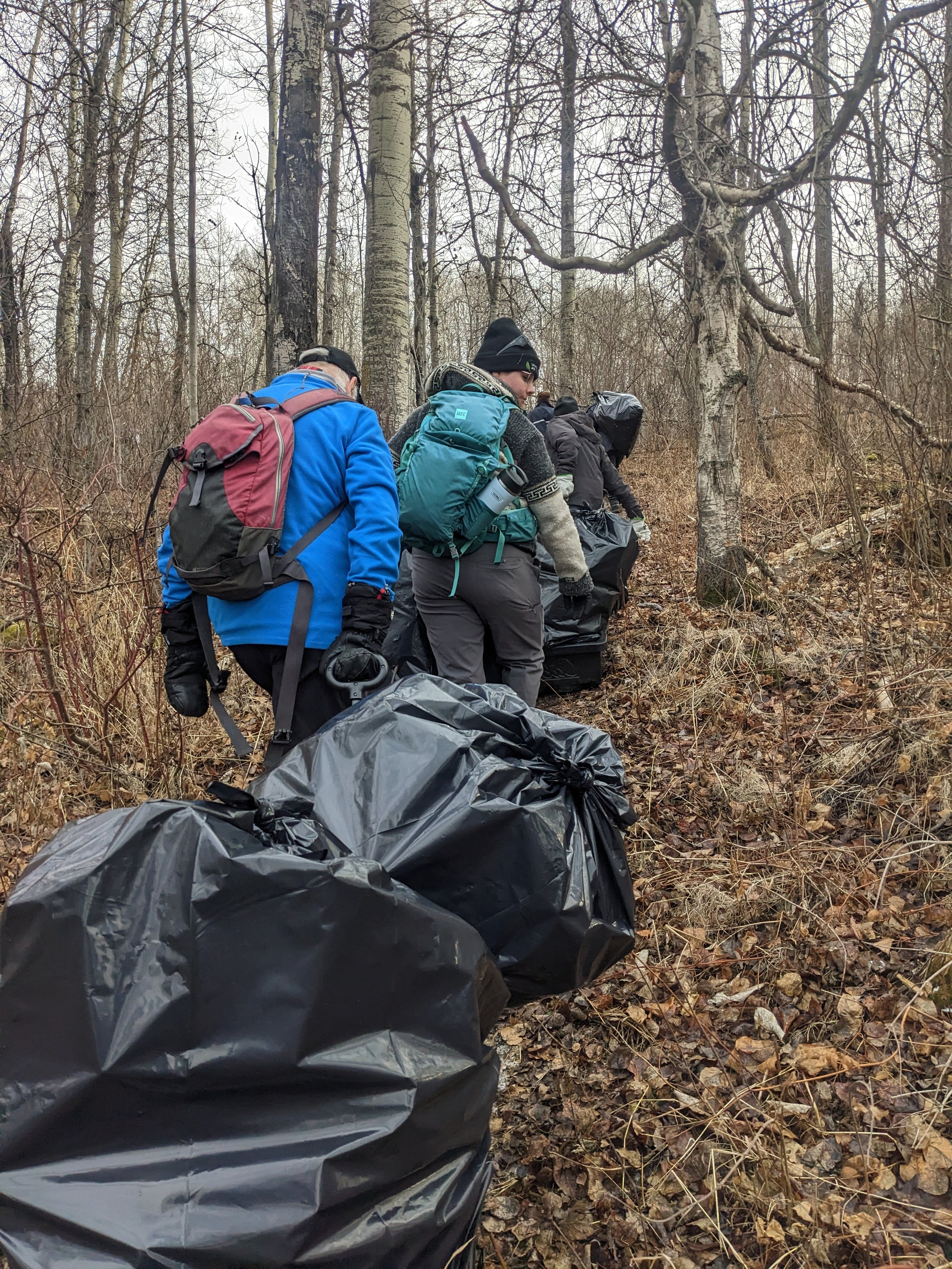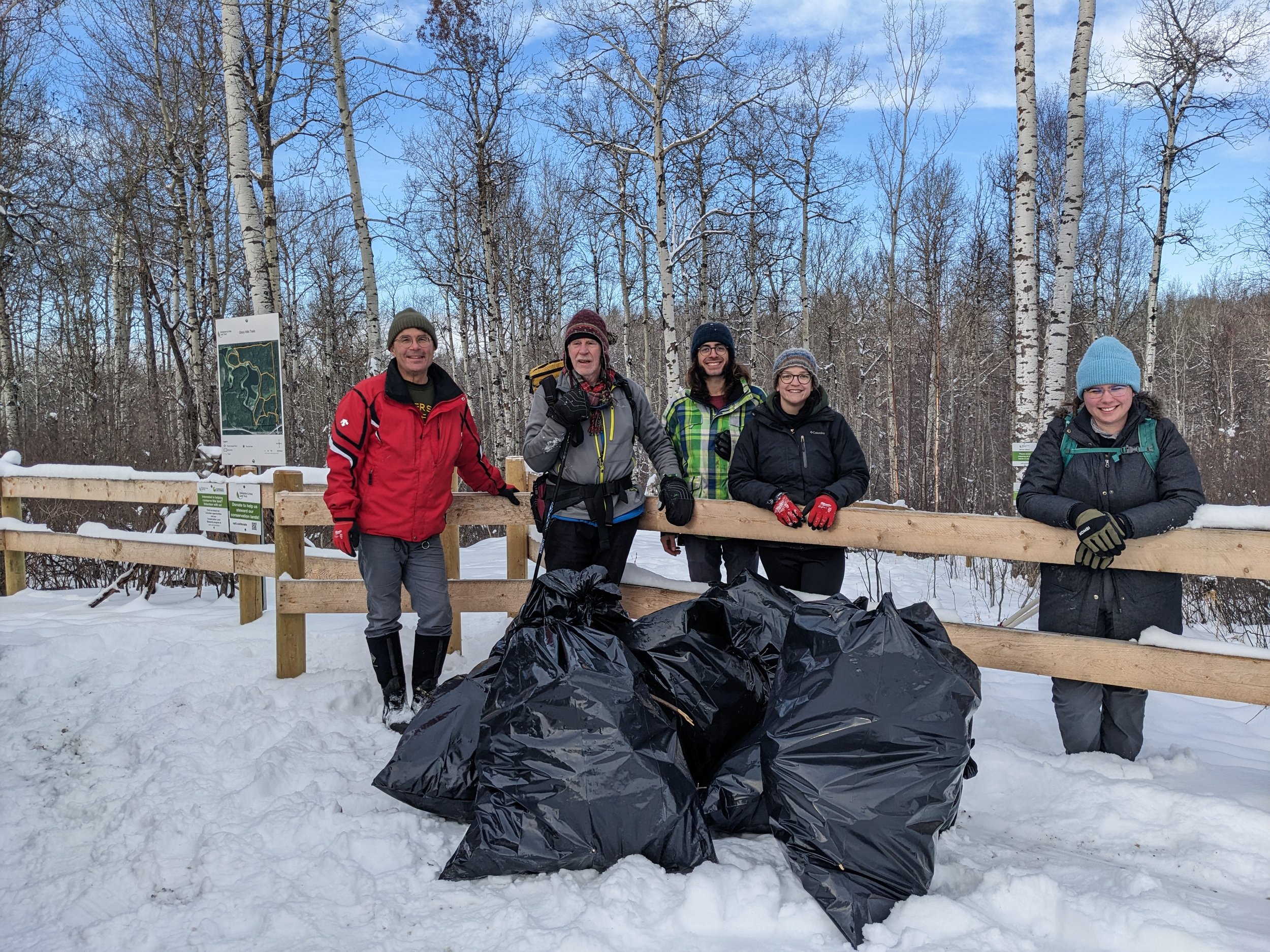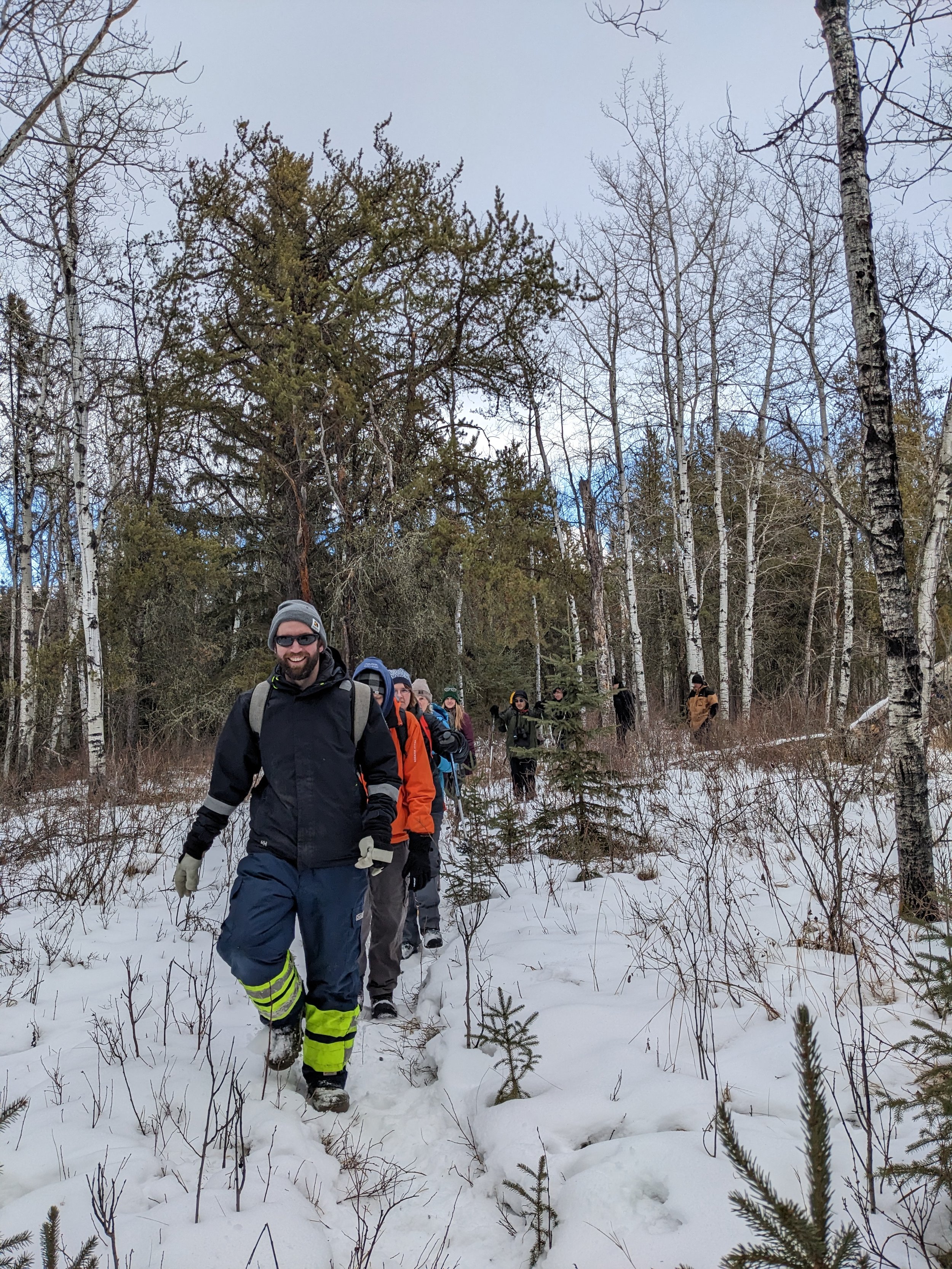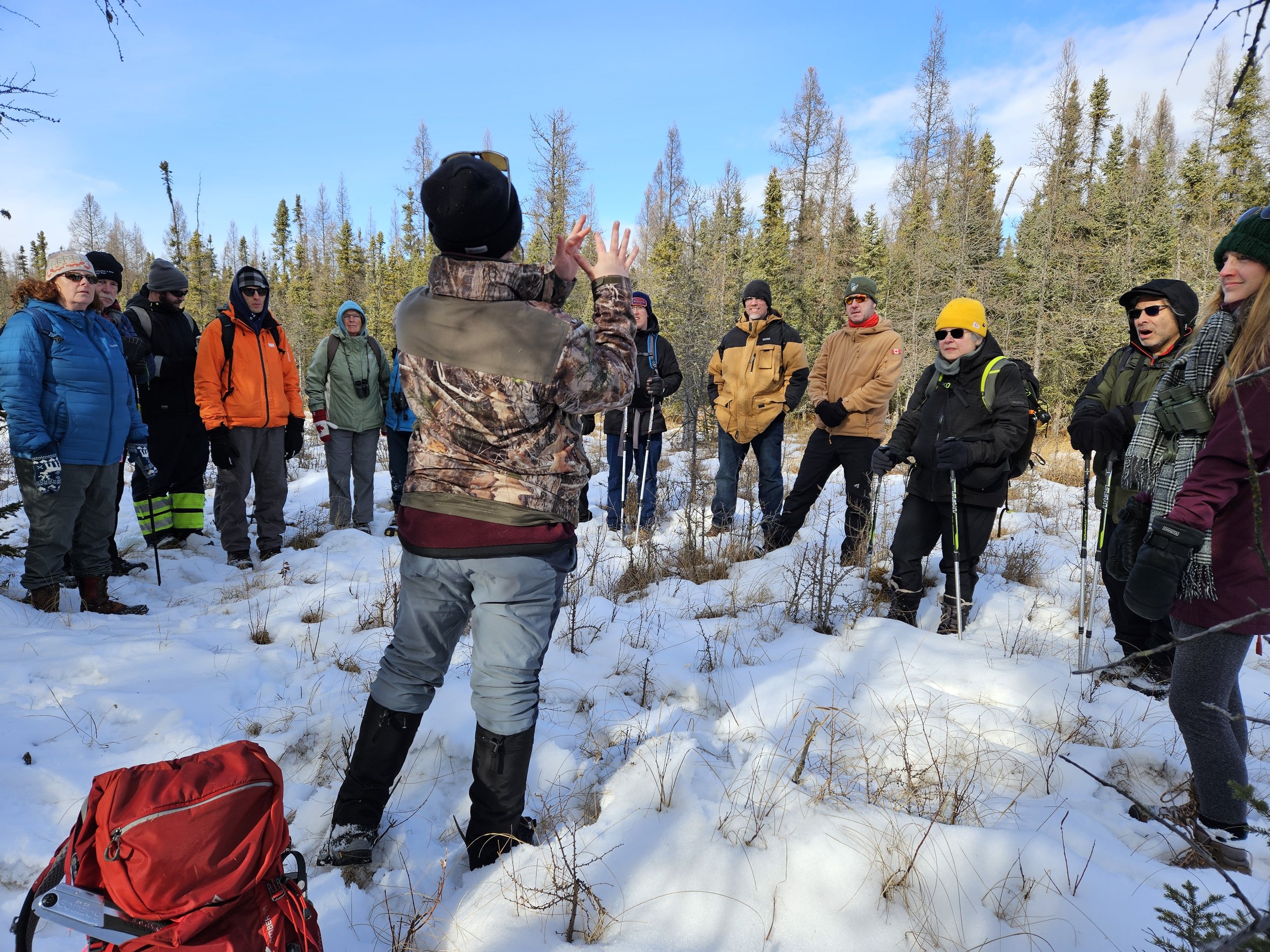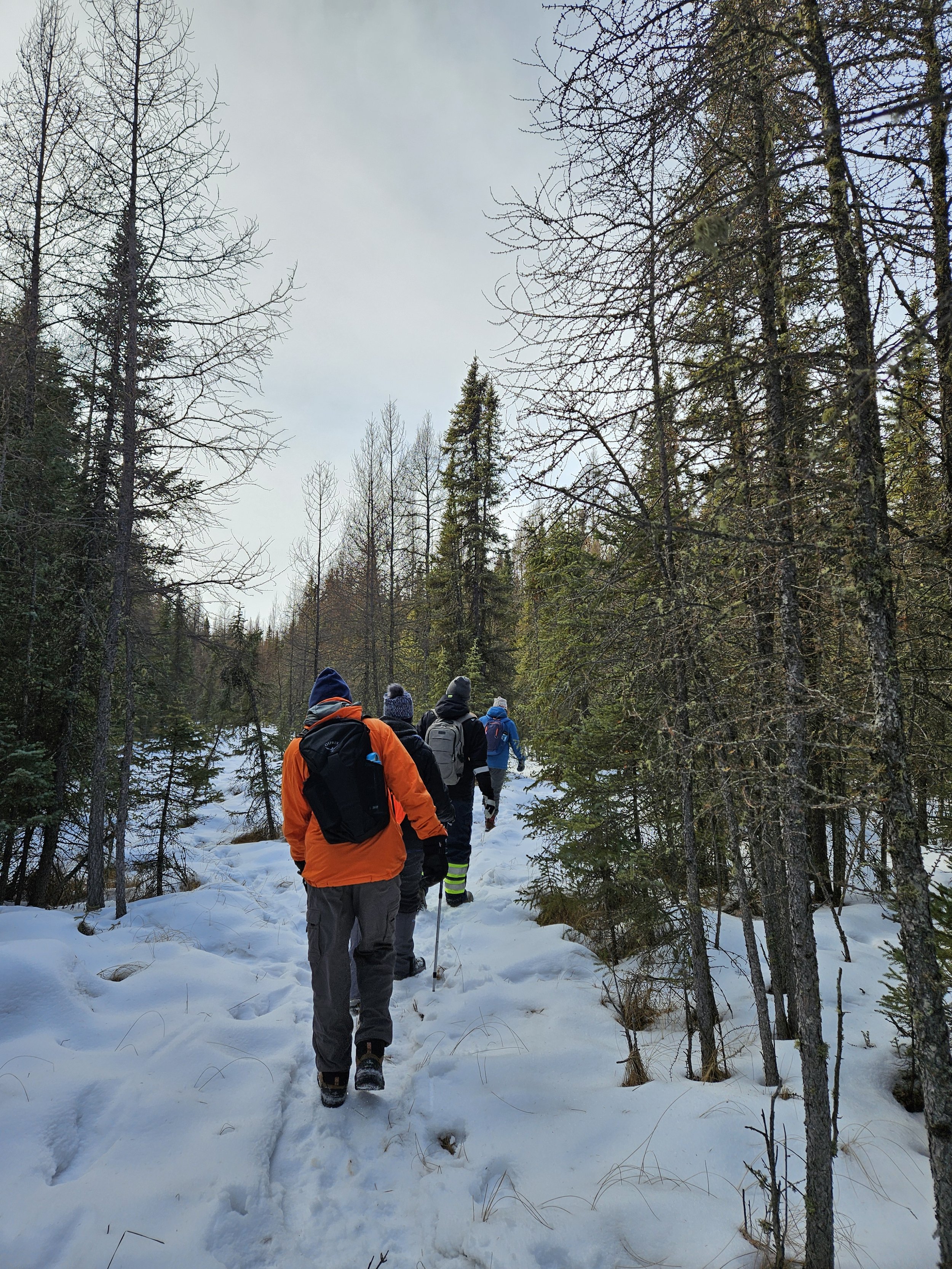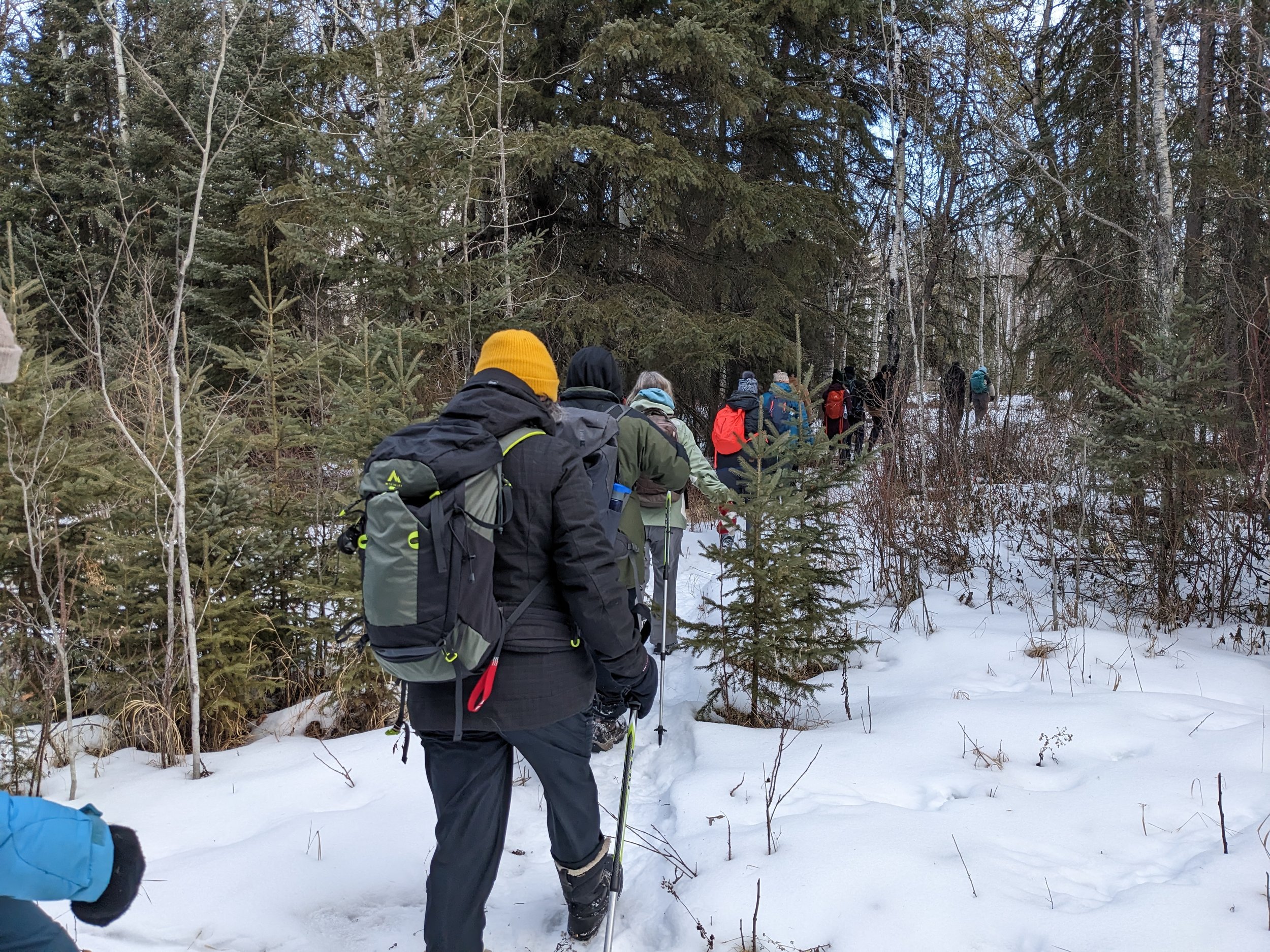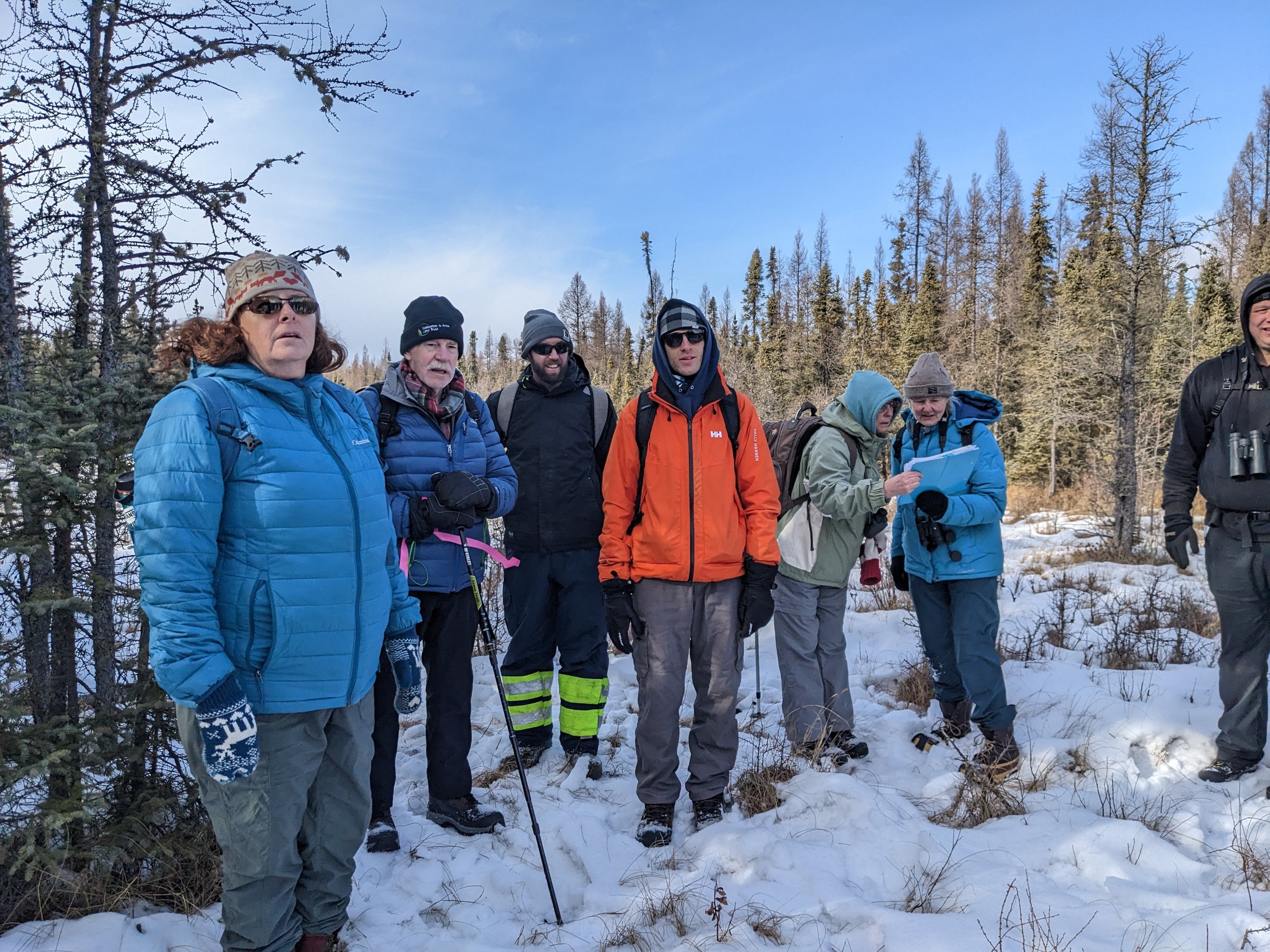Do you often wonder what EALT staff are up to in the winter? This edition of Field Notes provides a snapshot of our 2023/2024 winter season. Read on to learn about our new conservation lands, common winter fieldwork tasks, and other projects.
Preparing for new Conservation Lands
Conservation Team Lead, Meghan Jacklin, carrying a sign post through Sundew Conservation Land.
In preparation for Sundew being open to the public, EALT staff needed to make some visits to the land. In most cases, these visits entail staff scouting the existing trail system, level of human activity, and threats to the ecosystem that may be present. For this particular land, there were no trails maintained by previous landowners. These staff visits involved scouting the existing cutlines that run through the land, and looking at access points that have a risk of OHV activity. Staff also installed signs to mark the boundary of the conservation land during these visits.
There are no official trails at Sundew, but you can use our map to navigate the land. We recommend visiting this land in the winter due to its wet conditions and sensitive plant communities found here.
Another new conservation land is on the horizon for EALT! Earlier this winter, staff visited another land in Westlock County to map the trail system. This new conservation land conserves mixedwood and coniferous forests, and a section of a creek valley. Stay tuned to our Conservation Connections newsletter and our social media to hear when this land will be open to the public!
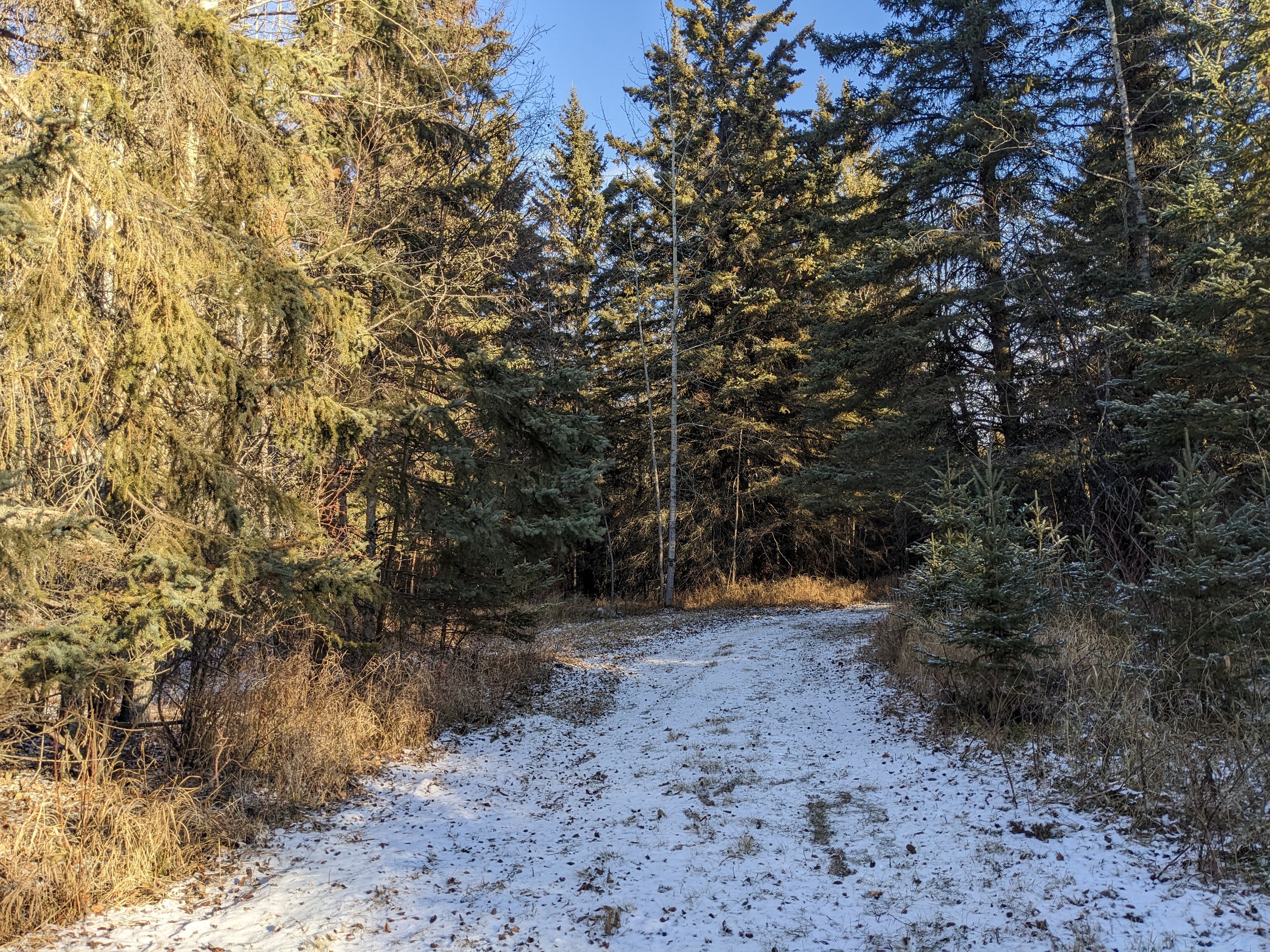
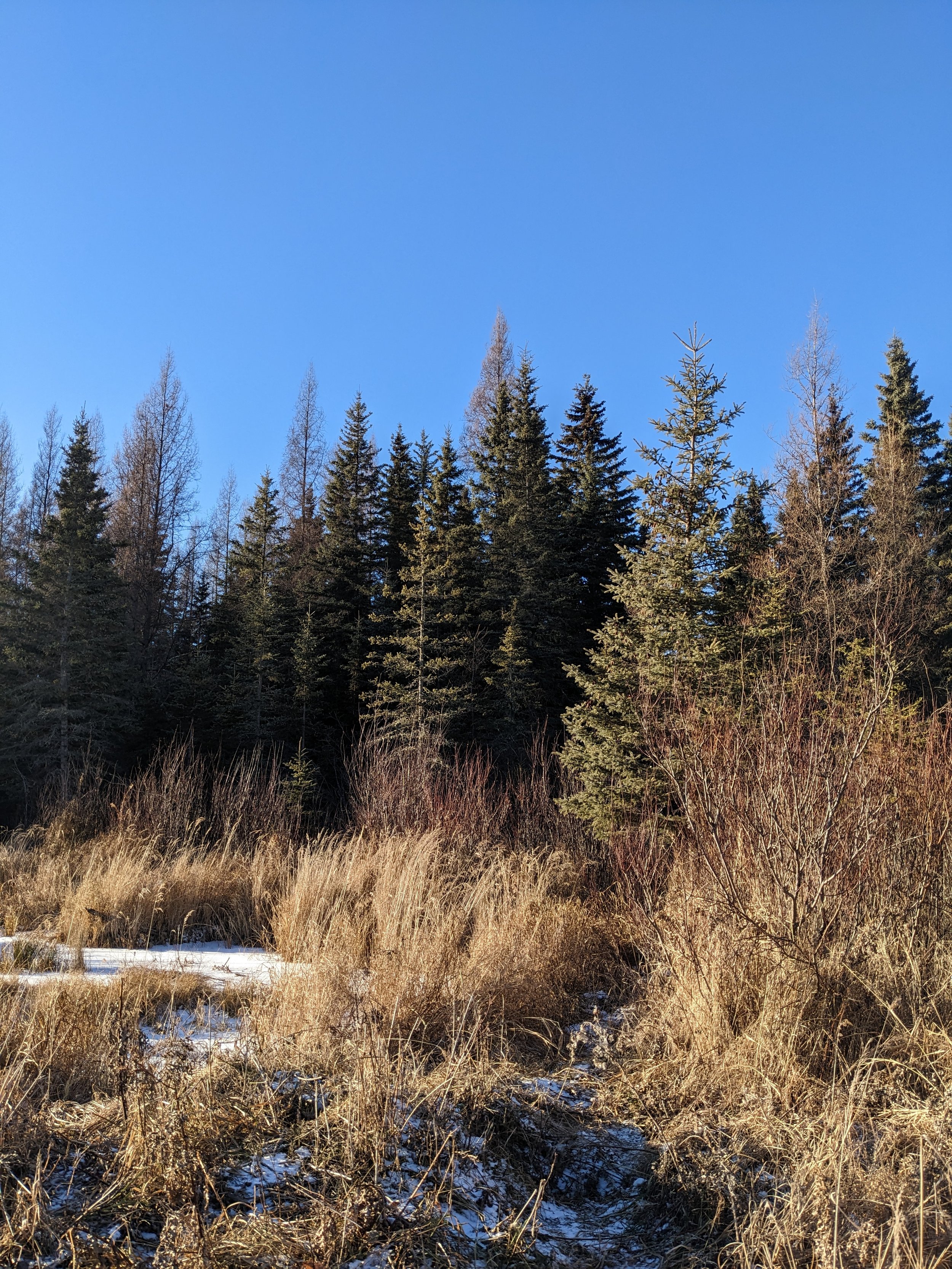
Stewardship
Mini-internship
In November, students from the University of Alberta joined staff for 3 days for a mini-internship. This opportunity is organized by the U of A for students to experience jobs applicable to their studies. These students joined staff for black knot removal, checked wildlife cameras, and created content for social media.
Have you seen the sign?
Once the City of Edmonton announced that Smith Crossing was open last November, EALT staff took the opportunity to check out the new bridge and install a new Larch Sanctuary sign. Before Larch Sanctuary was established, there was an older sign in this area stating that this place was part of MacTaggart Sanctuary, which is actually located further south. We hope that this sign will allow visitors to learn more about conservation easements and EALT.
Camera maintenance
Many visits to our conservation lands involved checking on wildlife cameras. A camera’s battery can usually last a few months, but in the winter the battery life can deplete faster. With these wildlife cameras, we hope to capture photos of wildlife traveling through our lands in all seasons.
Volunteers take part in tagging the wildlife in our photos. We often recruit volunteers in the fall to help process that year’s photos over the winter months. Sign up for our volunteer newsletter to be notified about this volunteer opportunity.
Here are a few of our wildlife camera photos that we recovered during this years winter field visits.
Black knot removal
This stewardship task is our most common type of event throughout the winter. Thankfully we had many successful events and volunteer visits this winter and we were able to reduce the black knot at several lands significantly. Coates, the Lu Carbyn Nature Sanctuary, and the Smith Blackburn Homestead have had their black knot patches removed.
Consistent visits year after year are needed to control black knot infections. At Pipestone Creek, Bunchberry Meadows, and Glory Hills, events were held more than once this winter to focus on persistent black knot patches.
Thanks to our event volunteers, corporate/school group volunteers, and Conservation Land Stewards for improving forest health this winter! You can stay in the know of upcoming volunteer events by subscribing to our volunteer newsletter.
Sundew Winter Walk Event
Sundew Winter Walk Opening Event on February 24, 2024.
Measuring the width of a track and referencing a field guide.
To celebrate our newest conservation land, we hosted a winter walk with EALT supporters and volunteers. We focused on showing the types of habitats at the land and used tracks to determine which wildlife are present here.
The event was held just before a big dump of snow, so there was crunchy, half melted snow on many portions of the trail. Spots that were forested still had deeper snow, but it had an icy crust due to the warm weather from that week. These were sub-par conditions to see detailed prints and tracks in the snow, but our visitors still spotted plenty of evidence of wildlife.
As a group, we stopped to look at tracks that were different sizes, shapes, or impressions from the last. Some of our most exciting tracks were those of moose, weasel, ruffed grouse, marten or fisher (could not determine), and even lynx!
If you want to learn more about wildlife tracking, check out this blog post. We hope to share another blog about wildlife tracking soon!
Here are some other resources:
Beginner tracking resources
Animal Tracks - A folding pocket guide to the tracks and signs of familiar North American species by James Kavanagh Waterford Press
Book recommendations:
Mammal Tracks & Sign: A Guide to North American Species by Mark Elbroch and Casey McFarland
Wildlife of the Pacific Northwest: Tracking and Identifying Mammals, Birds, Reptiles, Amphibians, and Invertebrates by David Moskowitz
We would also like to acknowledge Fiera Consulting for providing excellent courses in wildlife tracking. Some workshops led by Fiera are beginner friendly.




